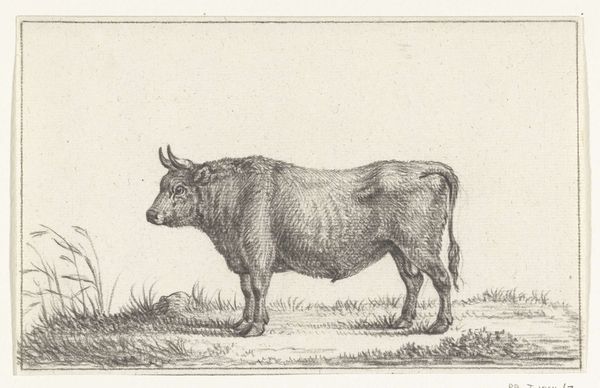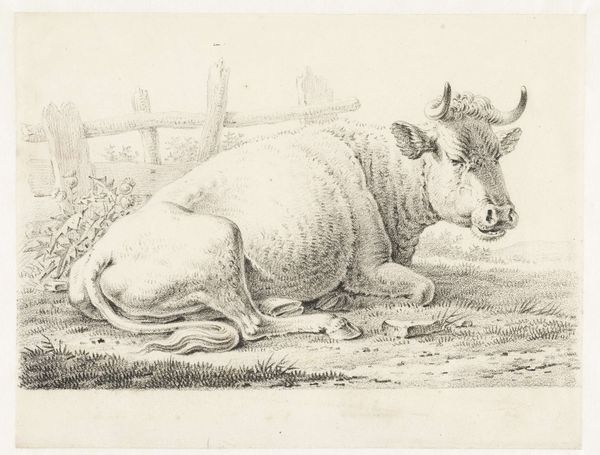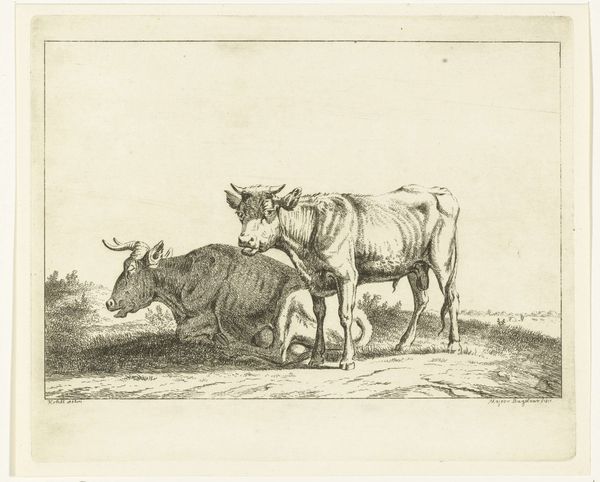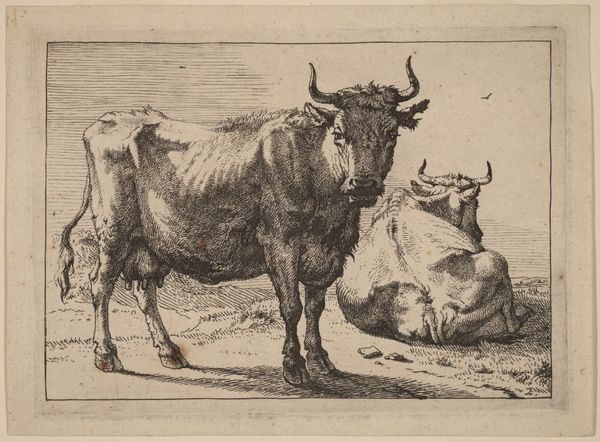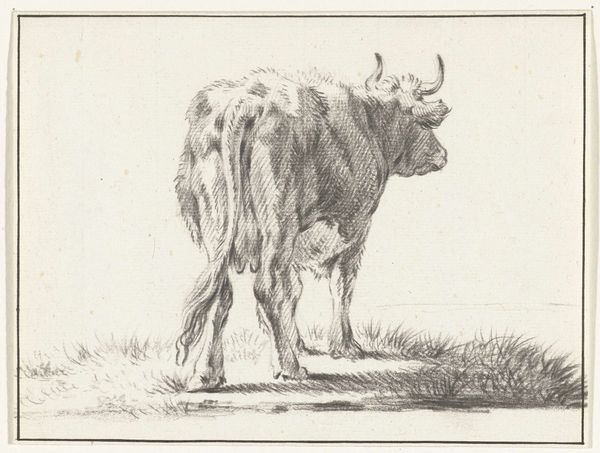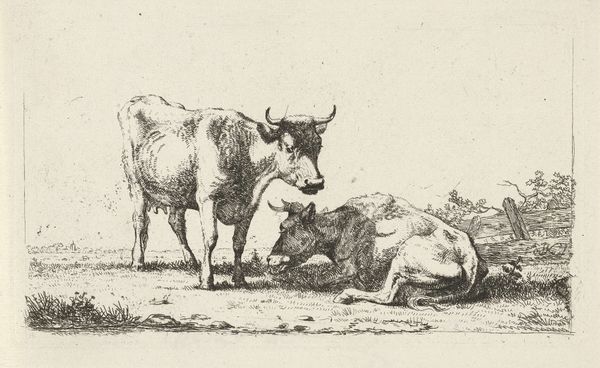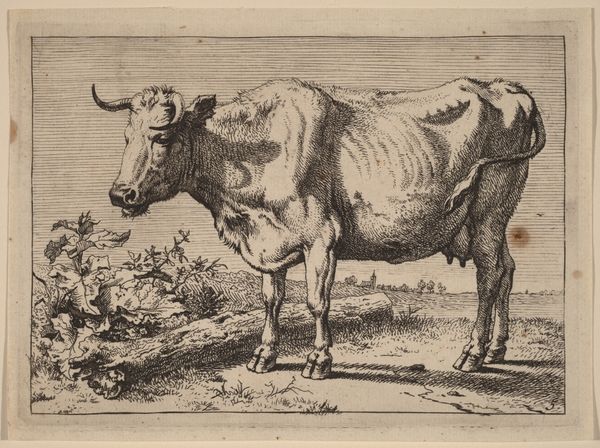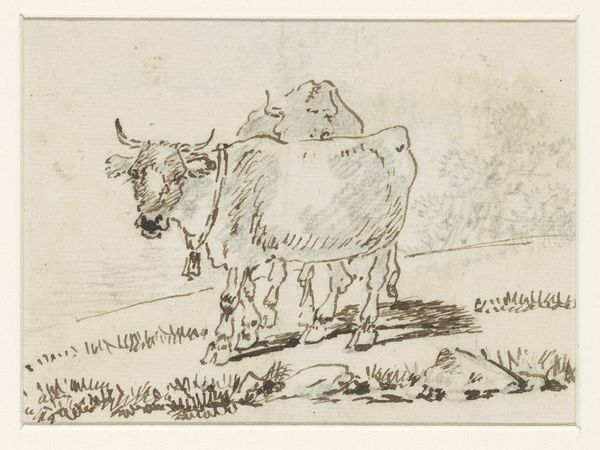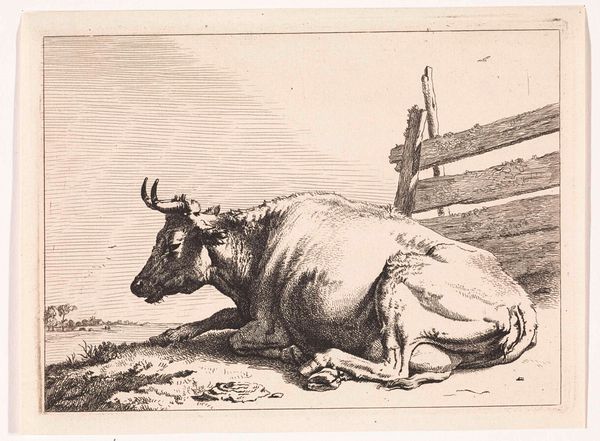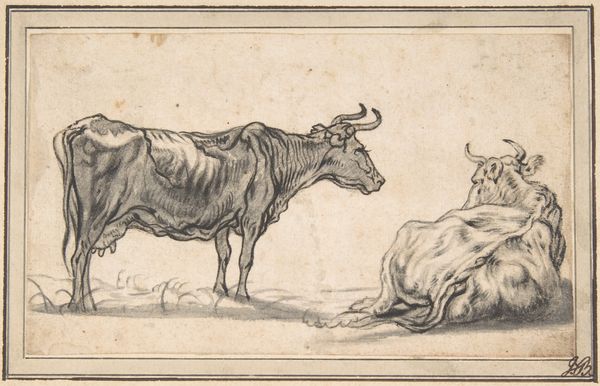
engraving
#
old engraving style
#
landscape
#
engraving
#
realism
Dimensions: height 162 mm, width 205 mm
Copyright: Rijks Museum: Open Domain
Wouter Dam created this print of two cows in 1768. While seemingly a simple pastoral scene, it offers a glimpse into the economic and social landscape of the Dutch Republic during the 18th century. Cattle were, of course, central to the Dutch agricultural economy. But they also represented wealth and status. The detailed rendering of these animals – one standing, the other reclining – suggests an interest in agrarian life, perhaps reflecting a growing fascination among the urban elite with the countryside. Dam's print coincides with a period of economic and social change, as the Dutch Republic began to shift from a mercantile to a more diversified economy. Prints like these may have served to promote and celebrate Dutch agricultural prowess but also reflect the social and economic changes of the time. To fully understand this artwork, we need to consider its historical and social context, researching Dutch agricultural practices, economic trends, and artistic patronage during the 18th century. In doing so, we can better appreciate its place within the broader narrative of Dutch society.
Comments
No comments
Be the first to comment and join the conversation on the ultimate creative platform.

